Evaluation of Sustainability Principles in Adaptable Re-Functioning: Traditional Residences in Demirel Complex
Abstract
1. Introduction
2. Local Architecture in the Sustainable Life Cycle
3. Protection of Local Architecture and Adaptable Re-Use
3.1. Environmental Sustainability in Refunctioning
3.2. Economic Sustainability in Re-Functioning
3.3. Social Sustainability in Refunctioning
4. Methodology
4.1. Field of Study (Turkey—Isparta/Islamköy)
Demirel Complex
- The traditional residence number 1 with the two-story, four-room exterior sofa plan type was converted into Şevket Demirel Museum House.
- The traditional residence number 2 with the two-story, three-room exterior sofa plan type was converted into Demirel Museum House.
- The traditional residence number 3 with the two-story, three-room exterior sofa plan type was converted into Haci Ali Demirel House (private property).
- The traditional residence number 4 with the two-story, two-room exterior sofa plan type was converted into a guest house.
- The traditional residence number 5 with the two-story, two-room exterior sofa plan type was converted into a lodging.
- The traditional residence number 6 with the two-story, one-room exterior sofa plan type was converted into Haci Abdil Ağa Masjid and Ağalar Kıraathanesi.
- The traditional residence number 7, with the two-story, two-room exterior sofa plan type, was converted into a Culture and Art House.
- The traditional residence number 8 with the two-story, two-room exterior sofa plan type was converted into the Presidency of the Demirel Foundation.
4.2. Reviewing the Re-Functioning of Traditional Houses in Süleyman Demirel Complex According to the Principles of Sustainable Approach
4.2.1. Şevket Demirel Museum House
4.2.2. Demirel Museum House
4.2.3. Haci Ali Demirel House Is outside the Scope of the Museum and Is Used as a Private Property
4.2.4. Guesthouse
4.2.5. Lodging
4.2.6. Haci Abdil Ağa Masjid and Ağalar Kıraathanesi (Coffee House)
4.2.7. Culture and Art House
4.2.8. Demirel Foundation Presidency
5. Results
5.1. Evaluation of Environmental Sustainability for Local Architecture Re-Functioned Demirel Complex
5.2. Evaluation of Economic Sustainability for Local Architecture in the Re-Functioned Demirel Complex
5.3. Evaluation of Social Sustainability for Local Architecture in the Re-Functioned Demirel Complex
6. Conclusions
Author Contributions
Funding
Institutional Review Board Statement
Informed Consent Statement
Data Availability Statement
Acknowledgments
Conflicts of Interest
Correction Statement
References
- Çetin, S. Geleneksel Konut Mimarisinin Ekolojik Yansımaları: Burdur Örneği. 5. Ulusal Çatı Cephe Sempozyumu. 2010. Available online: http://catider.org.tr/pdf/sempozyum5/Semp%205%20Bildiri%2015.pdf (accessed on 16 February 2021).
- Scott, M.M.; Frew, A.J. Exploring the role of in-trip applications for sustainable tourism: Expert perspectives. In Information and Communication Technologies in Tourism; Springer: Berlin/Heidelberg, Germany, 2013; pp. 36–46. [Google Scholar]
- Report of the World Commission on Environment and Development. Available online: http://www.un.org/documents/ga/res/42/ares42-187.htm (accessed on 20 October 2008).
- Yavuz, A. Sürdürülebilirlik Kavramı Ve İşletmeler Açısından Sürdürülebilir Üretim Stratejileri. J. Soc. Sci. Inst. 2010, 7, 63–86. [Google Scholar]
- What Is Sustainable Development? Available online: http://www.menominee.edu/sdi/whatis.htm (accessed on 2 October 2008).
- Kim, J.J.; Rigdon, B. Sustainable Architecture Module: Introduction to Sustainable Design; National Pollution Prevention Center for Higher Education: Cambridge, UK, 1998. [Google Scholar]
- Kohler, N. The relevance of green building challenge: An observer’s perspective. Build. Res. Inf. 1999, 27, 309–320. [Google Scholar] [CrossRef]
- Williams, D.E. Sustainable Design: Ecology, Architecture, and Planning; Wiley: Hoboken, NJ, USA, 2007; Volume 7, pp. 37–44, 81–104. [Google Scholar]
- Murzyn-Kupisz, M. Cultural, economic and social sustainability of heritage tourism: Issues and challenges. Econ. Environ. Stud. 2012, 12, 113–133. [Google Scholar]
- Arpacıoğlu, Ü. Kırsal Sürdürülebilirlikte Yeni Bir Model: Köyünü Yaşat Projesi. Yapı Derg. 2016, 421, 132–138. [Google Scholar]
- Ball, R. Developers, regeneration and sustainability issues in the reuse of vacant buildings. Build. Res. Inf. 1999, 27, 140–148. [Google Scholar] [CrossRef]
- Wilkinson, S.; Reed, R. The business case for incorporating sustainability in office buildings: The adaptive reuse of existing buildings. In Proceedings of the 14th Annual Pacific Rim Real Estate Society Conference, Pacific Rim Real Estate Society, Kuala Lumpur, Malaysia, 20–23 January 2008. [Google Scholar]
- Bullen, P.A.; Love, P.E.D. Residential regeneration and adaptive reuse: Learning from the experiences of Los Angeles. Struct. Surv. 2009, 27, 351–360. [Google Scholar] [CrossRef]
- Philokyprou, M.; Michael, A.; Malaktou, E.; Savvides, A. Environmentally responsive design in Eastern Mediterranean. The case of vernacular architecture in the coastal, lowland and mountainous regions of Cyprus. Build. Environ. 2016, 111, 91–109. [Google Scholar] [CrossRef]
- Schittich, C. In Detail, Solar Architecture, Strategies, Visions, Concepts; Kösel GmbH & Co. KG: Kempten, Germany, 2003. [Google Scholar]
- Başakman, M. Bir Araştırma Projesi: Geleneksel—Bölgesel Mimarinin Yorumlanması. Yapı Derg. 1993, 135, 59–70. [Google Scholar]
- Özgünler, M. Kırsal Sürdürülebilirlik Bağlamında Geleneksel Köy Evlerinde Kullanılan Toprak Esaslı Yapı Malzemelerinin İncelenmesi. Mimarlık Bilimleri ve Uygulamaları Dergisi (MBUD) 2017, 2, 33–41. [Google Scholar] [CrossRef]
- Correia, M.; Dipasquale, L.; Mecca, S. VERSUS: Heritage for Tomorrow; Firenze University Press: Firenze, Italy, 2014. [Google Scholar]
- Ruda, G. Rural Building and Environment. Landsc. Urban Plan. 1998, 41, 93–97. [Google Scholar] [CrossRef]
- Kısa Ovalı, P.; Delibaş, N. Yerel mimarinin sürdürülebilirliği kapsamında Kayaköy’ün çözümlemesi. MEGARON Yıldız Teknik Üniversitesi Mimarlık Fakültesi E-Dergisi 2016, 11, 515–529. [Google Scholar]
- Kuban, D. Tarihi Çevre Korumanın Mimarlık Boyutu Kuram ve Uygulama; Yapı Endüstri Merkezi Yayınları: İstanbul, Türkiye, 2000; p. 207. [Google Scholar]
- Stival, C.A.; Berto, R.; Morano, P.; Rosato, P. Reuse of Vernacular Architecture in Minor Alpine Settlements: A Multi-Attribute Model for Sustainability Appraisal. Sustainability 2020, 12, 6562. [Google Scholar] [CrossRef]
- Mazzarella, L. Tarihi ve mevcut binaların enerji iyileştirmesi. Yasal ve düzenleyici bakış açısı. Enerji ve Binalar 2015, 95, 23–31. [Google Scholar]
- Latham, D. Creative Reuse of Buildings; Donhead Publishing: Shaftesbury, UK, 2000. [Google Scholar]
- Wilkinson, S.; Reed, R.; Kimberley, J. Using building adaptive reuse to deliver sustainability in Australia. Struct. Surv. 2009, 27, 46–61. [Google Scholar] [CrossRef]
- Department of Environment and Heritage (DEH). Adaptive Reuse; Department of Environment and Heritage (DEH): Canberra, Australia, 2004.
- Bromley, R.D.F.; Tallon, A.R.; Thomas, C.J. City centre regeneration through residential development: Contributing to sustainability. Urban Stud. 2005, 42, 2407–2429. [Google Scholar] [CrossRef]
- Cooper, I. Post-occupancy evaluation-where are you? Build. Res. Inf. 2001, 29, 158–163. [Google Scholar] [CrossRef]
- Bullen, P.; Love, P. The rhetoric of adaptive reuse or reality of demolition: Views from the field. Cities 2010, 27, 215–224. [Google Scholar] [CrossRef]
- Gezer, H. Geleneksel Safranbolu Evlerinin Sürdürülebilirlik Açısından Değerlendirilmesi. İstanbul Ticaret Üniversitesi Fen Bilimleri Dergisi 2013, 12, 13–31. [Google Scholar]
- Fernandes, J.; Mateus, R.; Bragança, L.; Correia da Silva, J.J. Portuguese vernacular architecture: The contribution of vernacular materials and design approaches for sustainable construction. Archit. Sci. Rev. 2015, 58, 324–336. [Google Scholar] [CrossRef]
- Bullen, P.; Love, P. Adaptive reuse of heritage buildings. Struct. Surv. 2011, 29, 411–421. [Google Scholar] [CrossRef]
- Lazrak, F.; Nijkamp, P.; Rietveld, P.; Rouwendal, J. Cultural heritage and creative cities: An economic evaluation perspective. In Sustainable City and Creativity: Promoting Creative Urban Initiatives; Girard, P., Baycan, L.F., Nijkamp, T., Eds.; Ashgate Publishing: Farnham, UK, 2012; pp. 225–243. [Google Scholar]
- Celadyn, M. Interior Architectural Design for Adaptive Reuse in Application of Environmental Sustainability Principles. Sustainability 2019, 11, 3820. [Google Scholar] [CrossRef]
- Yoon, J.; Park, J. Comparative analysis of material criteria in neighborhood sustainability assessment toolsand urban design guidelines: Cases of the UK, the US, Japan, and Korea. Sustainability 2015, 7, 14450–14487. [Google Scholar] [CrossRef]
- Powter, A.; Ross, S. Integrating environmental and cultural sustainability for heritage properties. APT Bull. 2005, 36, 5–11. [Google Scholar]
- Han, J.; Kim, S. Heritage value through regeneration strategy in Mapo Cultural Oil Depot, Seoul. Sustainability 2018, 10, 3340. [Google Scholar] [CrossRef]
- International Charter for the Conservation And Restoration Of Monuments And Sites. Available online: http://www.icomos.org.tr/Dosyalar/ICOMOSTR_tr0605742001542305046 (accessed on 20 November 2020).
- Langston, C.; Yung, E.H.K.; Chan, E.H.W. The application of ARP modelling to adaptive reuse projects in Hong Kong. Habitat Int. 2013, 40, 233–243. [Google Scholar] [CrossRef]
- Pendlebury, J. Conservation and regeneration: Complementary or conflicting processes? The case of Grainger Town, Newcastle upon Tyne. Plan. Pract. Res. 2002, 17, 145–158. [Google Scholar] [CrossRef]
- Strange, I.; Whitney, D. The changing roles and purposes of heritage conservation in the UK. Plan. Pract. Res. 2003, 18, 219–229. [Google Scholar] [CrossRef]
- Goodland, R.; Daly, H. Environmental sustainability: Universal and non-negotiable. Ecol. Appl. 1996, 6, 1002–1017. [Google Scholar] [CrossRef]
- Salman, M. Sustainability and Vernacular Architecture: Rethinking What Identity Is; Intechopen: London, UK, 2018. [Google Scholar] [CrossRef]
- Yarrow, T. Building on the Past: Exploring the intersections between energy, environment and authenticity through an ethnographic study of renovation. In Proceedings of the 2nd International Conference on Preservation, Maintenance and Rehabilitation of Historic Buildings and Structures, Porto, Portugal, 22–24 July 2015; pp. 615–623. [Google Scholar]
- Tu, H.M. The Attractiveness of Adaptive Heritage Reuse: A Theoretical Framework. Sustainability 2020, 12, 2372. [Google Scholar] [CrossRef]
- Konstantinou, T.; Dimitrijević, B. Sustainable refurbishment for an adaptable built environment. In Sustainable and Resilient Buildings: Approaches, Methods and Tools; Kosanović, S., Klein, T., Konstantinou, T., Radivojević, A., Hildebrand, L., Eds.; TU Delft: Delft, The Netherlands, 2018; pp. 207–227. [Google Scholar]
- Koca, G. Evaluation of Traditional Şirince Houses According to Sustainable Construction Principles. Int. J. Archit. Plan. 2019. [Google Scholar] [CrossRef]
- Kohler, N.; Yang, W. Long-termmanagementofbuilding stocks. Build. Res. Inf. 2007, 35, 351–362. [Google Scholar] [CrossRef]
- Johnson, A. Rehabilitation and re-use of existing buildings. In Building Maintenance and Preservation: A Guide to Design and Management; Mills, E.D., Ed.; Architectural Press: Oxford, UK, 1996; pp. 209–230. [Google Scholar]
- Ellison, L.; Sayce, S.; Smith, J. Socially responsible property investment: Quantifying the relationship between sustainability and investment property worth. J. Prop. Res. 2007, 24, 191–219. [Google Scholar] [CrossRef]
- Sev, A. Sürdürülebilir Mimarlık; Yapı Endüstri Merkezi Yayınları: İstanbul, Turkey, 2009. [Google Scholar]
- Merlín-Uribe, Y.; González-Esquivel, C.E.; Contreras-Hernández, A.; Zambrano, L.; Moreno-Casasola, P.; Astier, M. Environmental and socio-economic sustainability of chinampas (raised beds) in Xochimilco, Mexico City. Int. J. Agric. Sustain. 2013, 11, 216–233. [Google Scholar] [CrossRef]
- Philokyprou, M.; Michael, A. Environmental Sustainability in the Conservation of Vernacular Architecture. The Case of Rural and Urban Traditional Settlements in Cyprus. Int. J. Archit. Herit. 2020. [Google Scholar] [CrossRef]
- Matero, F.G. Loss, compensation and authenticity: The contribution of Cesare Brandi to architectural conservation in America. Future Anterier 2007, IV, 45–57. [Google Scholar]
- Watson, G.; Bentley, I. Identity by Design; Elsevier Ltd.: Oxford, UK, 2007. [Google Scholar]
- Pedersen, A. Managing Tourism at World Heritage Sites: A Practical Manual for World Heritage Site Managers; UNESCO World Heritage Centre: Paris, France, 2002. [Google Scholar]
- The Scottish Office. Down to Earth: A Scottish Perspective on Sustainable Development; Scottish Office: Edinburgh, UK, 1999; p. 26. ISBN 0-7480-7171-7. [Google Scholar]
- Koçhan, A. Doğal Çevreyle Kurulan Anlamsal Bağ: Sürdürülebilir Toplu Konut Tasarımı. Yapı Dergisi 2003, 256, 49–55. [Google Scholar]
- Elinc, Z.; Kaya, L.; Elinç, H. Portable garden complex in protected urban areas. Int. J. Curr. Res. 2018, 10, 71095–71097. [Google Scholar] [CrossRef]
- Kiper, P. Küreselleşme Sürecinde Kentlerin Tarihsel-Kültürel Değerlerinin Korunması-Türkiye-Bodrum Örneği, Doktora Tezi, Ankara. 2004. Available online: https://dspace.ankara.edu.tr/xmlui/bitstream/handle/20.500.12575/28280/2289.pdf?sequence=1&isAllowed=y (accessed on 16 February 2021).
- Selim, C.; Mutlu, S.S.; Selim, S. Kentsel Alanlarda Biyolojik Çeşitliliğin Sürdürülebilirliği Ve Koruma Yaklaşımları. Turk. J. Sci. Rev. 2015, 8, 18–45. [Google Scholar]
- Almhafdy, A.; Ibrahim, N.; Ahmad, S.S.; Yahya, J. Thermal performance analysis of courtyards in a hot humid climate using computational fluid dynamics CFD method. Procedia Soc. Behav. Sci. 2015, 170, 474–483. [Google Scholar] [CrossRef]
- Du, X.; Bokel, R.; Van den Dobbelsteen, A. Building microclimate and summer thermal comfort in free-running buildings with diverse spaces: A Chinese vernacular house case. Build. Environ. 2014, 82, 215–227. [Google Scholar] [CrossRef]
- Ghaffarianhoseini, A.; Berardi, U.; Ghaffarianhoseini, A. Thermal performance characteristics of unshaded courtyards in hot and humid climates. Build. Environ. 2015, 87, 154–168. [Google Scholar] [CrossRef]
- Van Geenhuisan, M.; Nijkamp, P. Sürdürülebilir Kenti Nasıl Planlamalı? Toplum ve Bilim Dergisi 1994, 64, 131. [Google Scholar]
- Fulya, G.; Cansu, G.; Ahmet, K. Sürdürülebilir Kalkınma İçin Ekolojik Yapı Tasarım Kriterleri. Akad. Disiplinlerarası Bilimsel Araştırmalar Derg. 2017, 3, 92–107. [Google Scholar]
- Ozan, B. Sürdürülebilirlik Kavrami Ve Mimarlikta Tasarima Yansimasi. Master’s Thesis, İstanbul Teknik Üniversitesi, İstanbul, Turkey, 2003. [Google Scholar]
- El Sorady, D.A.; Rizk, S.M. LEED v4.1 mevcut binalar için operasyonlar ve bakım ve uygunluk değerlendirmesi: Bayt Al-Suhaymi, Tarihi Kahire. Alex. Eng. J. 2020, 59, 519–531. [Google Scholar]
- Ertaş, Ş.; Sönmez, E.; Torun, A.; Kulak, F. The Awareness of Locals in Culture Tourism: The Sample of Sille/Konya. J. Sustain. Dev. 2017, 10, 125–134. [Google Scholar] [CrossRef]
- Burcu, O.; Panayiotis, T.; Eyup, D. Re-estimating the interconnectedness between the demandof energy consumption, income, and sustainability indices. Environ. Sci. Pollut. Res. 2019, 26, 26500–26516. [Google Scholar][Green Version]
- Gillian, F.; Halliki, K. A review of environmental impact indicators of cultural heritage buildings: A circular economy perspective. Environ. Res. Lett. 2020, 15, 043003. [Google Scholar][Green Version]
- Feilden, B.M. Conservation of Historic Buildings; Elsevier: Amsterdam, The Netherlands, 2003. [Google Scholar]
- Birol Akkurt, H. Reconstitution of the Place Identity within the Intervention Efforts in the Historic Built Environment. In the Role of Place Identity in the Perception, Understanding, and Design of Built Environments, 2nd ed.; Casakin, H., Bernardo, F., Eds.; Bentham Science Publishers: Sharjah, United Arab Emirates, 2012; pp. 63–77. [Google Scholar][Green Version]
- Wang, H.; Zeng, Z. A multi-objective decision-making process for reuse selection of historic buildings. Expert Syst. Appl. 2010, 37, 1241–1249. [Google Scholar] [CrossRef]
- Üstün, R. İslamköy Tarihi; 1. Baskı; Yeni Matbaa: Isparta, Turkey, 2016; ISBN 978-605-030-174-8. [Google Scholar][Green Version]
- Isparta İl Kültür ve Turizm Müdürlüğü. Available online: https://isparta.ktb.gov.tr/TR-162906/suleyman-demirel-demokrasi-ve-kalkinma-muzesi.html (accessed on 20 November 2020).[Green Version]
- Koç, S. Geleneksel Konutların İç Mekan Kurgusunu Yerel Kimlik Unsurlarıyla Okumak: İslamköy Örneği. Yüksek Lisans-Karadeniz Teknik Üniversitesi: Türkiye, 2019. Available online: https://tez.yok.gov.tr/UlusalTezMerkezi/tezDetay.jsp?id=haBs15GJUVFI1tEJ1J5UqQ&no=uqDr6ma1BYiEzo2bOFL7uw (accessed on 16 February 2021).[Green Version]
- Personal Archieve. Available online: http://mustafataskin.weebly.com/uploads/1/6/1/0/16108940/mg-8048-mt.jpg (accessed on 20 November 2020).[Green Version]
- Süleyman Demirel Demokrasi ve Kalkınma Müzesi. Available online: https://isparta.ktb.gov.tr/TR-162906/suleyman-demirel-demokrasi-ve-kalkinma-muzesi.html (accessed on 20 November 2020).[Green Version]
- İslamköy Tarihi. Available online: www.demirelvakfi.org (accessed on 1 February 2020).[Green Version]


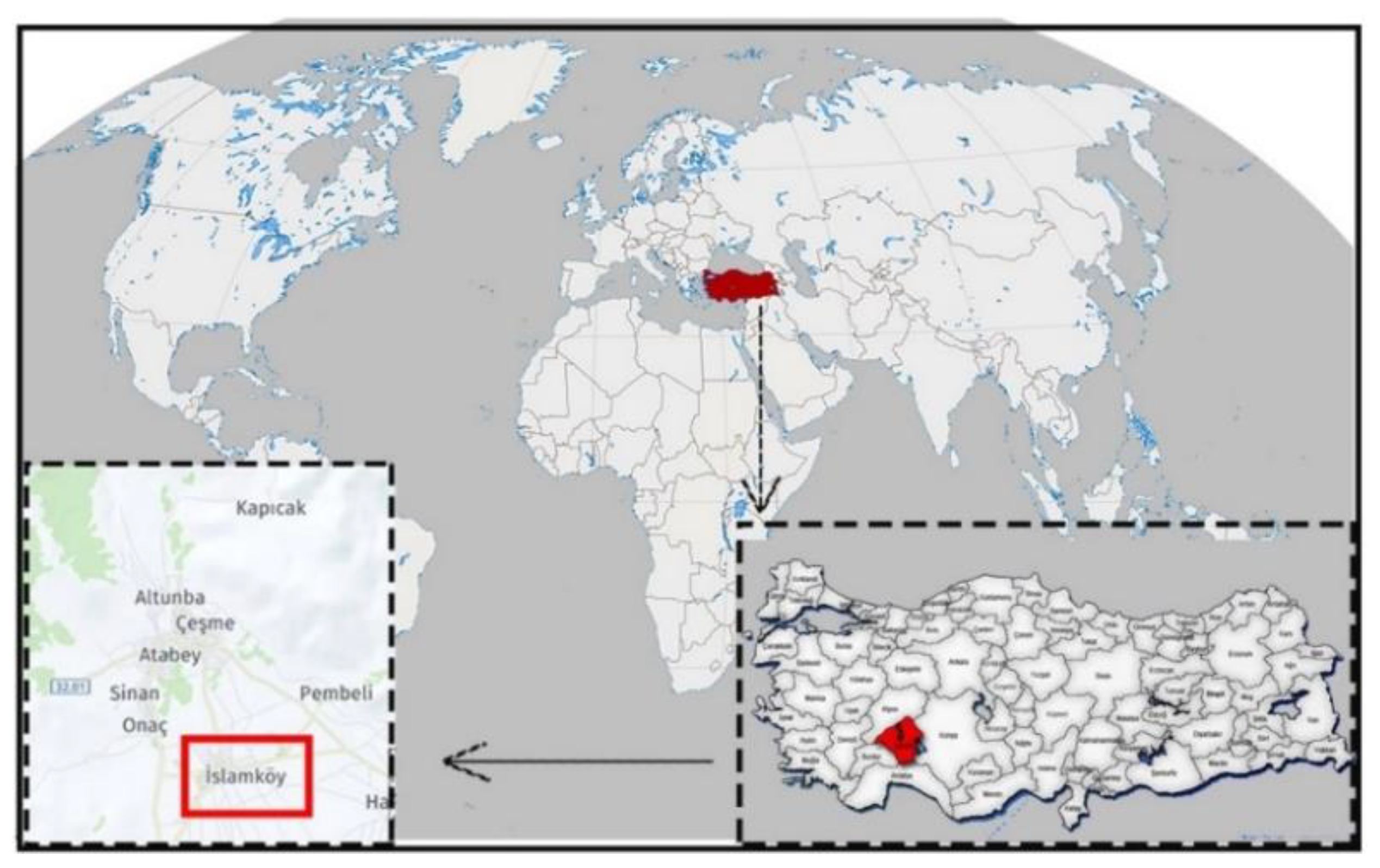
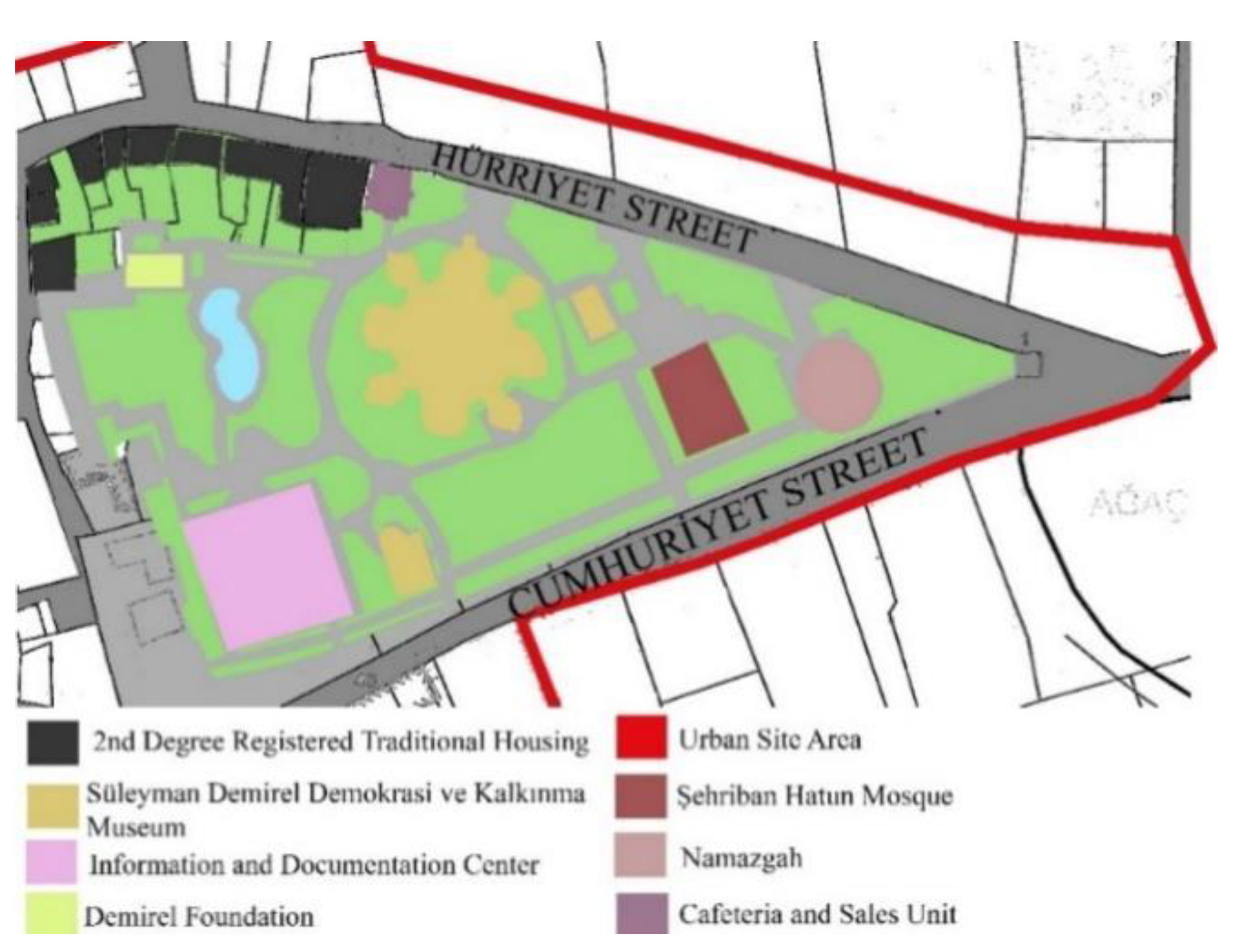

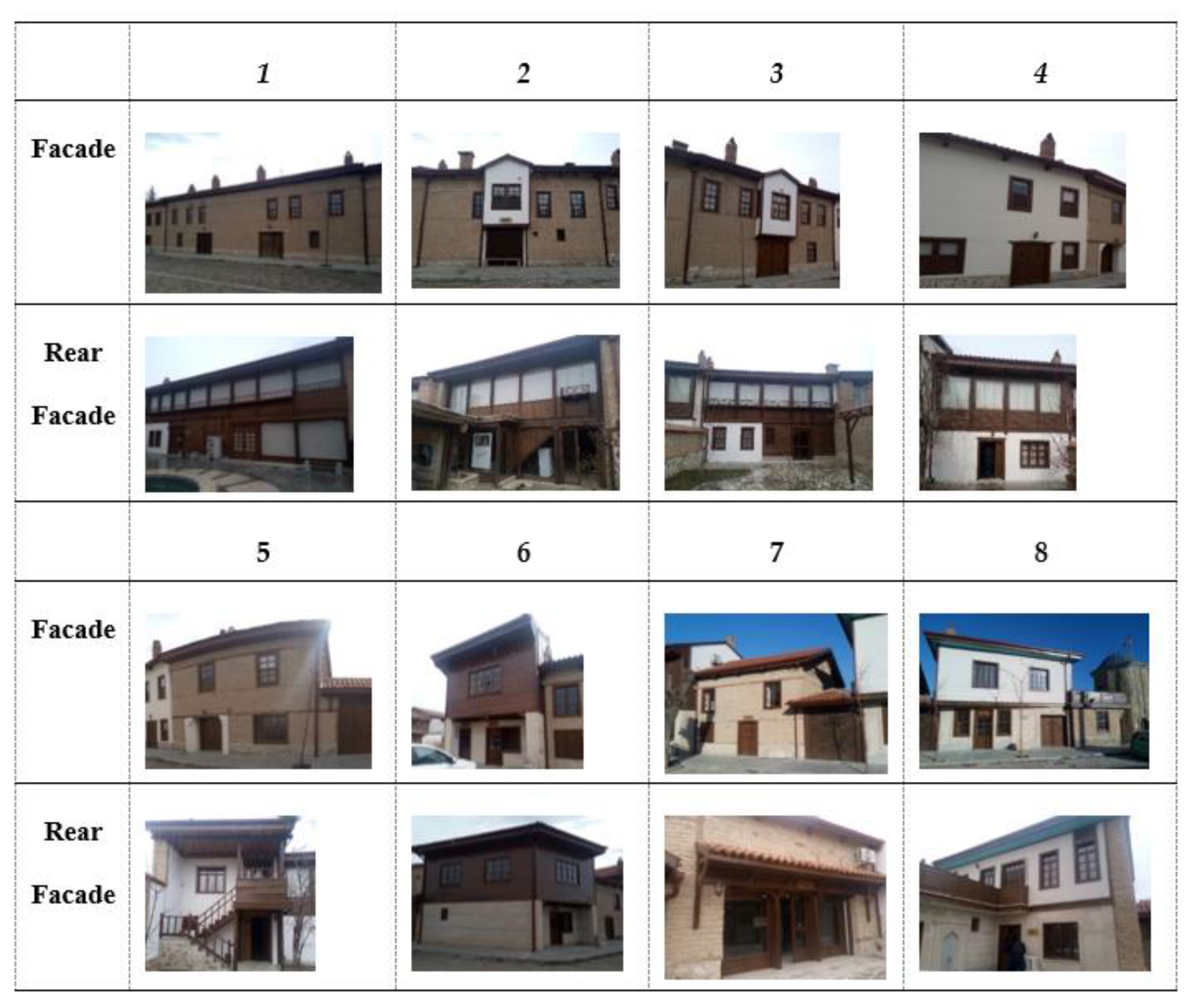
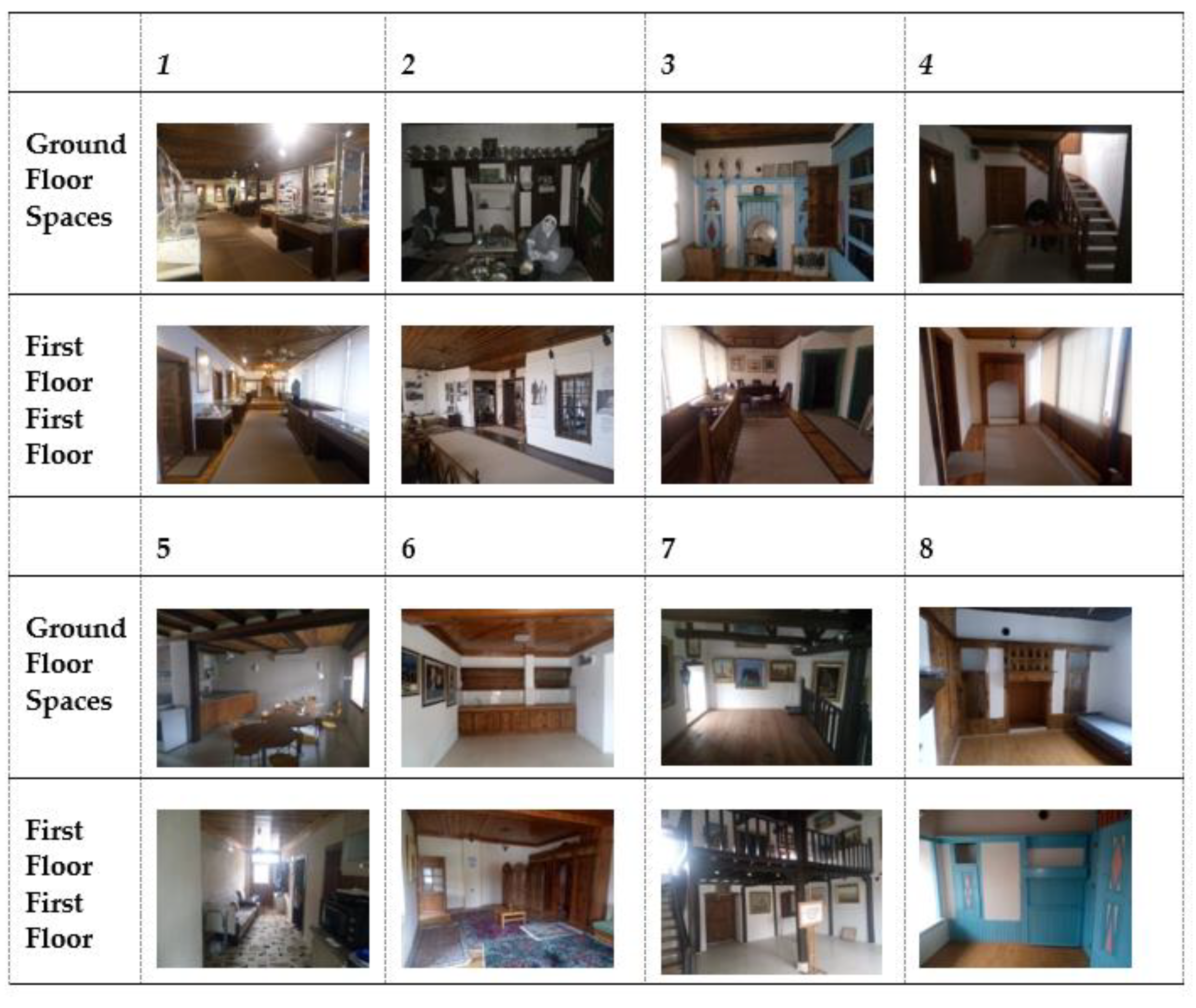

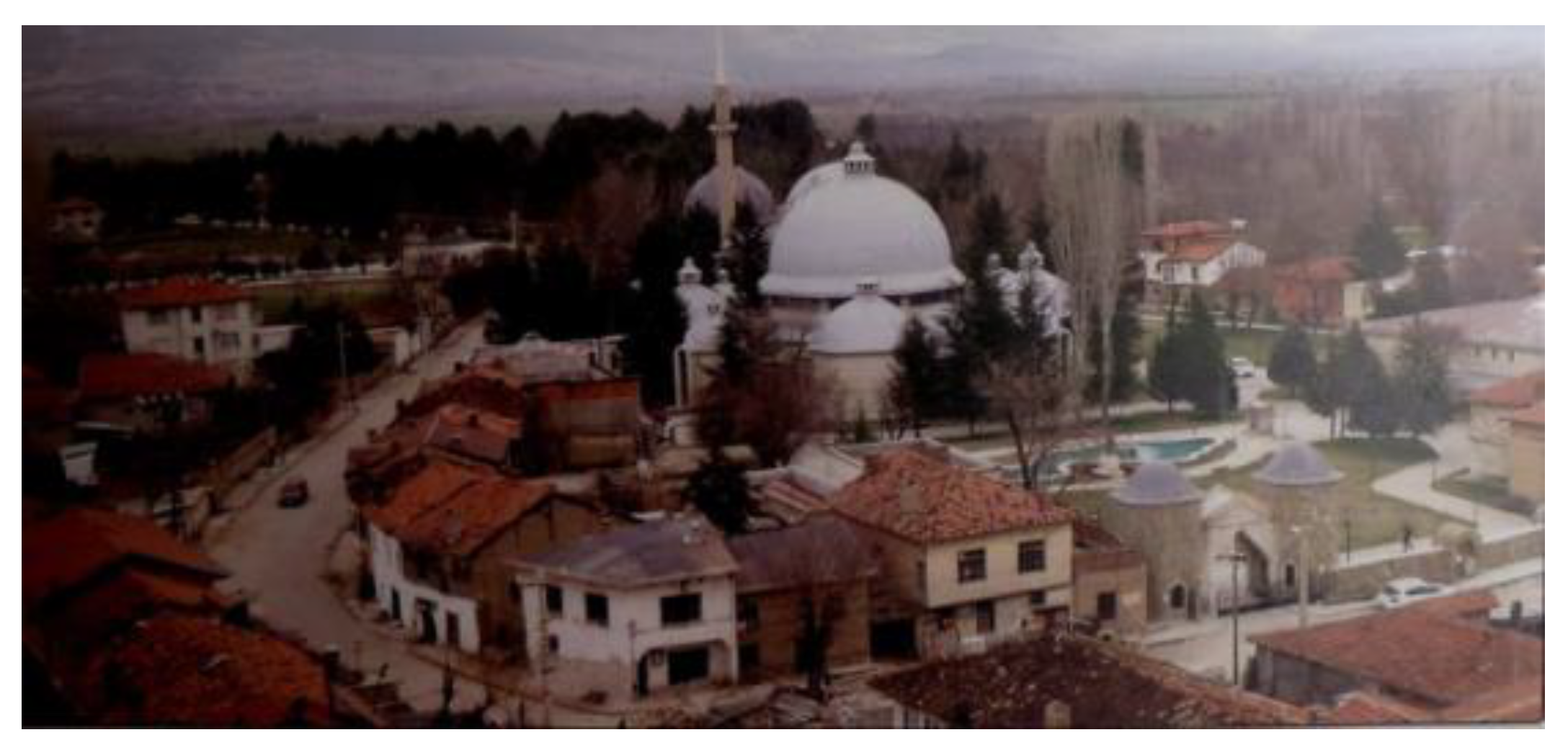
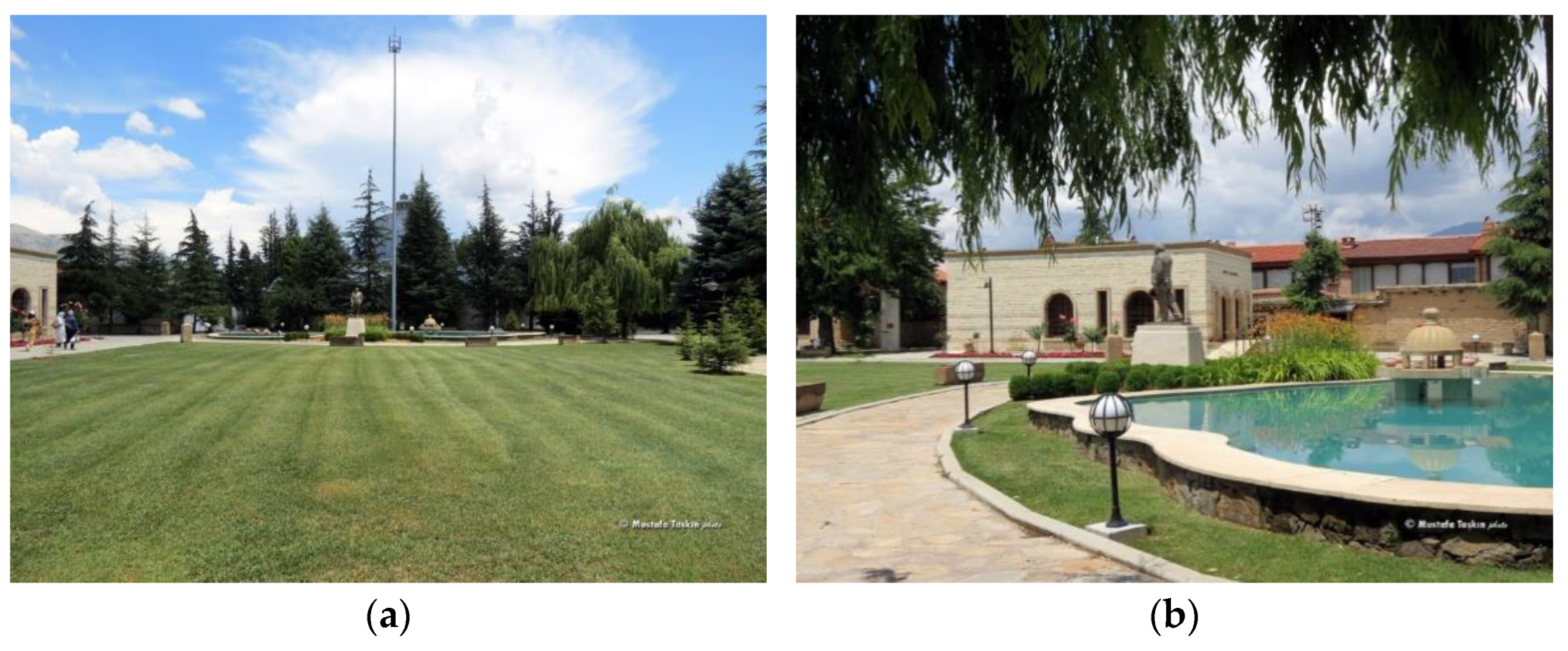
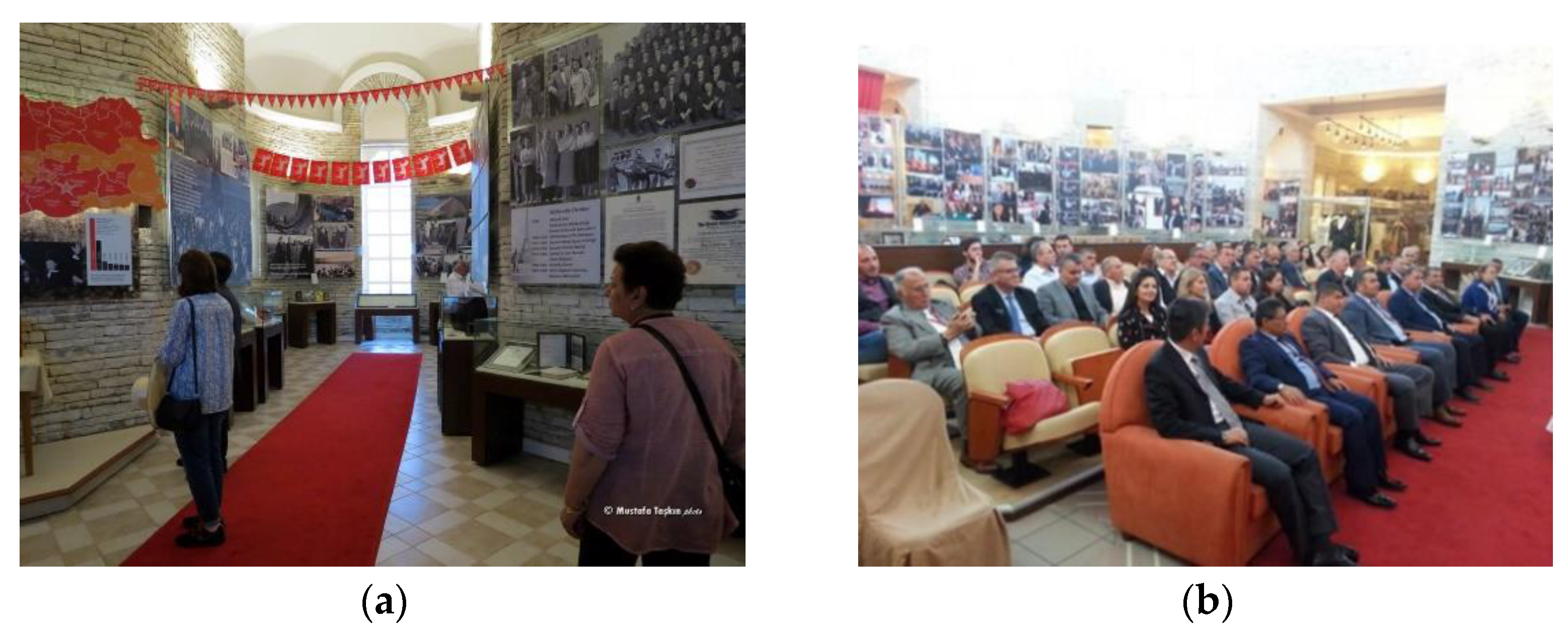
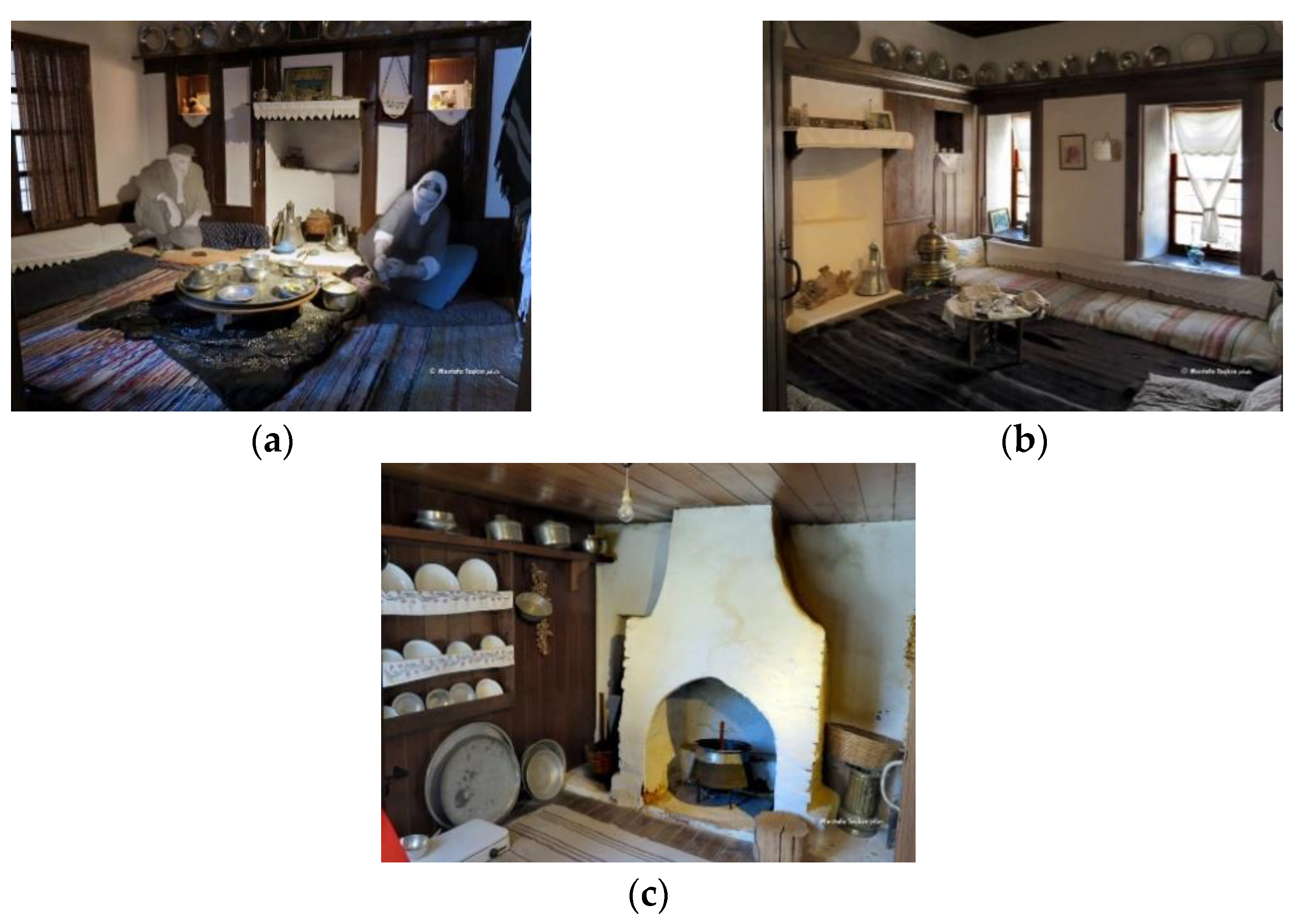
| Principles of Sustainable Approach in Re-Functioning | |
|---|---|
| Sub-Parameters of Environmental Sustainability | |
| Sub-Parameters of Natural Environmental Features | Sub-Parameters of Artificial Environmental Features |
| Local Resources, local material usage (Correia, 2014 [18], The Scottish Office, 1999 [57], Philokyprou and Michael, 2020 [53]) | Construction techniques (Philokyprou and Michael, 2020 [53], Correia, 2014 [18]) |
| Adaptation to the natural environment, characteristic environmental feature (Koçhan, 2003 [58], Philokyprou et al. 2017 [14], Elinç et al., 2018 [59]) | Architectural appearance values, building aesthetics, architectural elements, morphological elements (Kiper, 2004 [60], Philokyprou and Michael, 2020 [53], Carlos et al, 2014 [52]) |
| Ecology-sensitive, bioclimatic properties (Koçhan, 2003 [58], Philokyprou et al. 2017 [14], Selim et al. [61]) | Energy efficiency and continuity (on The Building Scale) (Philokyprou et al. 2017 [14], Yarrow, 2015 [44], Salman, 2018 [43]) |
| Protection of resources (Yarrow, 2015 [44], Carlos et al, 2014 [52], Goodland and Daly, 2019 [42]) | Architectural layout, urban texture, planning (Almhafdy et al., 2015 [62], Du, Bokel and van den Dobbelsteen, 2014 [63], Ghaffarianhoseini and Berardi, 2015 [64], Salman, 2018 [43]) |
| Sub-Parameters of Economic Sustainability | |
| Waste management (Dennis, 2008 [65], Gökşen, Güner and Koçhan, 2017 [66], Baysan, 2003 [67]) | Management of resources regulations (Pedersen, 2002 [56], Elsorady, 2020 [68]) |
| Reducing operating, maintenance and repair costs (Sev, 2009 [51], Philokyprou and Michael, 2020 [53]) | Cultural activity (Philokyprou and Michael, 2020 [53], Tu, H. M., 2020 [45], Ertaş et al., 2017 [69]) |
| Energy saving, energy efficiency (Doğan, 2019 [70], Foster and Kreinin, 2019 [71]) | Tourism return (Kiper, 2004 [61], Feilden, 2003 [72], Ertaş et al., 2017 [69]) |
| Job opportunity, job creation sa (Philokyprou and Michael, 2020 [53], Konstantinou and Dimitrijevic, 2018 [46]) | Revival of settlements, local workforce (Philokyprou and Michael, 2020 [53], Correia, 2014 [18]) |
| Sub-Parameters of Social Sustainability | |
| Protection of artisanal activities The Scottish Office 1999, [57], Philokyprou and Michael, 2020 [53] | Preservation of cultural diversity, continued (The Scottish Office 1999, [57], Philokyprou and Michael, 2020 [53], Correia, 2014, [18], Carlos et al, 2014 [52], Bromley 2005 [27], Pedersen, 2002 [56]) |
| Ensuring public participation in protection actions (The Scottish Office, 1999 [57], Elsorady, 2020 [68], Matero 2007 [54]) | Balance between past and present (Dipasquale et al., 2014 [18], Philokyprou and Michael, 2020 [53]) |
| Strengthening environmental and community ties, emotional value (Akkurt, 2010 [73], Philokyprou and Michael, 2020 [53]) | Existance, creation and protection of identity (Kiper, 2004 [61], Bullen and Love, 2010 [29], Salman, 2018 [43], Watson and Bentley, 2007 [55]) |
| Continuity of local construction and culture (Wang and Zeng, 2010 [74], Akkurt, 2010 [73]) | Cultural function (Philokyprou and Michael, 2020 [53], Latham, 2000 [24]) |
| Human needs and quality of life (Konstantinou and Dimitrijevic, 2018 [46], Philokyprou and Michael, 2020 [53]) | Memory, sense of place (Bullen and Love, 2010 [29], Philokyprou and Michael, 2020 [53]) |
| Human needs and quality of life (Konstantinou and Dimitrijevic, 2018 [46], Philokyprou and Michael, 2020 [53]) | Memory, sense of place (Bullen and Love, 2010 [29], Philokyprou and Michael, 2020 [53]) |
| No | 1 | 2 | 3 | 4 | 5 | 6 | 7 | 8 |
|---|---|---|---|---|---|---|---|---|
| Plan type |  |  |  |  |  |  |  |  |
| Places | Ground Floor Plan | First Floor Plan |
|---|---|---|
 Haney Altı Haney Altı |  | 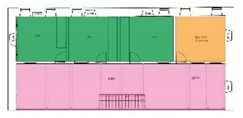 |
 Yerden Ev Yerden Ev | ||
 Porch Porch | ||
 Room Room | ||
 Main Room Main Room | ||
 Sofa Sofa | ||
Line Scale:  m m | ||
| Places | Ground Floor Plan | First Floor Plan |
|---|---|---|
 Haney Altı Haney Altı | 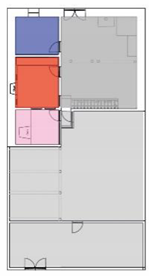 |  |
 Yerden Ev Yerden Ev | ||
 Porch Porch | ||
 Room Room | ||
 Main Room Main Room | ||
 Sofa Sofa | ||
Line Scale:  m m | ||
| Places | Ground Floor Plan | First Floor Plan |
|---|---|---|
 Yerden Ev Yerden Ev | 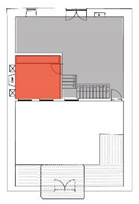 | 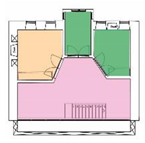 |
 Porch Porch | ||
 Room Room | ||
 Main Room Main Room | ||
 Sofa Sofa | ||
Line Scale: m m | ||
| Places | Ground Floor Plan | First Floor Plan |
|---|---|---|
 Yerden Ev Yerden Ev | 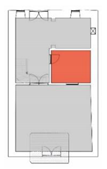 | 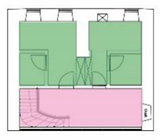 |
 Porch Porch | ||
 Room Room | ||
 Sofa Sofa | ||
Line Scale:  m m | ||
| Places | Ground Floor Plan | First Floor Plan |
|---|---|---|
 Haney Altı Haney Altı |  | 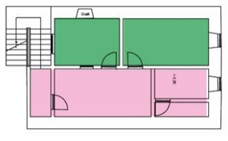 |
 Yerden Ev Yerden Ev | ||
 Porch Porch | ||
 Room Room | ||
 Sofa Sofa | ||
Line Scale:  m m | ||
| Places | Ground Floor Plan | First Floor Plan |
|---|---|---|
 Room Room |  |  |
 Porch Porch | ||
Line Scale: m m | ||
| Places | Ground Floor Plan | First Floor Plan |
|---|---|---|
 Porch Porch |  | 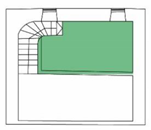 |
 Mezzanine Mezzanine | ||
Line Scale:  m m | ||
| Places | Ground Floor Plan | First Floor Plan |
|---|---|---|
 Porch Porch | 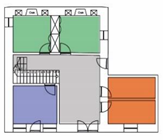 | 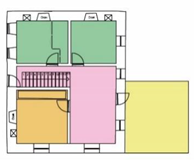 |
 HaneyAltı HaneyAltı | ||
 Room Room | ||
 Cellar Cellar | ||
 Main Room Main Room | ||
 Sofa Sofa | ||
 Roof Roof | ||
Line Scale:  m m | ||
| Advantages | |
|---|---|
| Increasing the tourism supply of the complex in İslamköy enables the opening of different businesses such as food businesses and sales places around it and improves competition. | Except for the display of the local values of İslamköy in the complex; introducing Süleyman Demirel, an important politician for Turkey, gave the settlement a social identity. |
| Increasing the tourism supply of the complex in İslamköy increases duration of stay of local visitors in the region and contributes in the long term contributes to the return of the young population who migrated due to unemployment. | Non-governmental organization such as “Productive Women’s Association” was established; this has created production and employment. |
| Awareness is formed using local resources such as materials, building masters, etc. in the immediate vicinity for re-functioning houses. | The construction of the complex enables the continuity of identity in terms of both natural and local architecture. |
| Traditional houses consume as little energy as possible due to the period in which they are built. The re-functioning process ensures the continuity of passive energy. | The complex provides an important tourism return for İslamköy. |
| Disadvantages | |
| Due to the increase in tourism supply, decreases in the purchasing power of local people occur. | Increased re-functioning works in the process increase the prices of energy and local resources. |
| Increased re-functioning in the complex; it has triggered similar works in the local people’s own residences in İslamköy. However, the economic power of local people affects the nature of these practices. | |
Publisher’s Note: MDPI stays neutral with regard to jurisdictional claims in published maps and institutional affiliations. |
© 2021 by the authors. Licensee MDPI, Basel, Switzerland. This article is an open access article distributed under the terms and conditions of the Creative Commons Attribution (CC BY) license (http://creativecommons.org/licenses/by/4.0/).
Share and Cite
Durukan, A.; Ertaş Beşir, Ş.; Koç Altuntaş, S.; Açıkel, M. Evaluation of Sustainability Principles in Adaptable Re-Functioning: Traditional Residences in Demirel Complex. Sustainability 2021, 13, 2514. https://doi.org/10.3390/su13052514
Durukan A, Ertaş Beşir Ş, Koç Altuntaş S, Açıkel M. Evaluation of Sustainability Principles in Adaptable Re-Functioning: Traditional Residences in Demirel Complex. Sustainability. 2021; 13(5):2514. https://doi.org/10.3390/su13052514
Chicago/Turabian StyleDurukan, Ayşegül, Şebnem Ertaş Beşir, Selver Koç Altuntaş, and Mikail Açıkel. 2021. "Evaluation of Sustainability Principles in Adaptable Re-Functioning: Traditional Residences in Demirel Complex" Sustainability 13, no. 5: 2514. https://doi.org/10.3390/su13052514
APA StyleDurukan, A., Ertaş Beşir, Ş., Koç Altuntaş, S., & Açıkel, M. (2021). Evaluation of Sustainability Principles in Adaptable Re-Functioning: Traditional Residences in Demirel Complex. Sustainability, 13(5), 2514. https://doi.org/10.3390/su13052514







